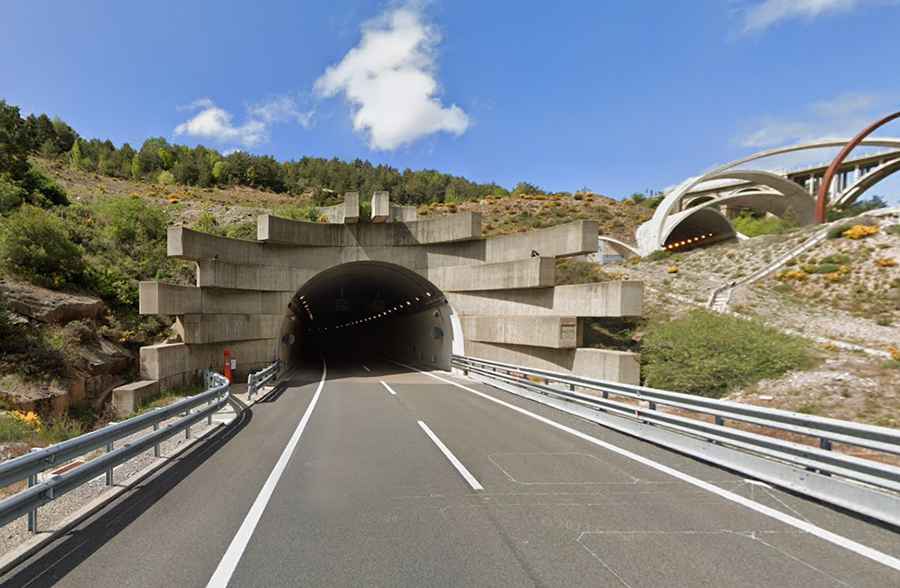Why Puerto de Monrepos is the Only Road in Spain Where Snow Chains Are Prohibited?
Puerto de Monrepós is a mountain pass at an elevation of 1,282m (4,206ft) above sea level, located in the province of Huesca, in Spain.

Where is Puerto de Monrepós?
The pass is located in the autonomous community of Aragón, in the northeastern part of the country.
Is Puerto de Monrepós paved?
The road through the pass is fully paved. It’s called the A-23, and the route was completed in 2019. Significant structures such as tunnels and viaducts were constructed to navigate the challenging terrain of this mountain pass.
How long is Puerto de Monrepós?
The pass spans 43km (26.7 miles), running south to north from Huesca to Sabiñánigo. The road provides stunning views and a great driving experience.
How challenging is driving Puerto de Monrepós in winter?
Set high in the midst of the Pyrenees mountain range, the pass experiences significant snowfall every winter. Snowplows and tons of salt spread on the roads are a common sight near the Pyrenean region. In Spain, the most common method to avoid losing control of a vehicle in snow or ice is to use snow chains.
However, there is a section in Spain where the use of chains is prohibited: the A-23, on the Monrepós Pass. Only vehicles equipped with M+S tires (standing for "mud + snow") are permitted to drive there. These tires are specially designed for both muddy and snowy conditions, enhancing road safety for drivers.
The prohibition exists because of the numerous tunnels on this road. Drivers stopping constantly to put on or remove chains near tunnel entrances and exits can cause hazards. Additionally, driving through tunnels with chains can damage the asphalt.
In such situations, it’s important to check your planned route and carry chains if you are using summer tires on icy or snowy roads. Ensure you know which tires to place the chains on, as their placement differs for front-wheel drive and rear-wheel drive vehicles.
Is the road to Puerto de Monrepós busy?
The Monrepós Pass is the main route to the Pyrenees, with approximately 9,000 vehicles passing through daily, 14% of which are heavy vehicles. This causes heavy traffic jams, especially on weekends and during typical winter holidays, when many people travel to the Alto Aragón ski resorts.
Why is Puerto de Monrepós dangerous?
The pass is frequently in the news due to the high number of traffic accidents. These incidents are caused by the high traffic density, frequent issues with snow and ice in winter, and the defective design of its bypass.
The geological instability of the terrain, combined with the flawed design of the bypass, has led to serious issues such as landslides and accidents that have necessitated closures of the A-23.
The first major incident occurred in 1997, when the road was still a conventional bypass. Shortly after its inauguration, a landslide on the Nueno-Arguis section forced traffic to be rerouted for months via the N-330a and the La Manzanera tunnel.
The most recent incident occurred in 2018, when a landslide caused a crack to form in the roadway. With the La Manzanera tunnel closed to traffic since 2004 due to safety concerns, vehicles had to be rerouted for weeks via the A-132 road, connecting Huesca, Ayerbe, and Puente la Reina de Jaca.